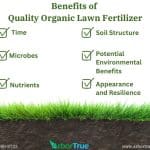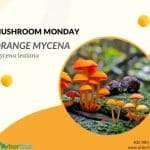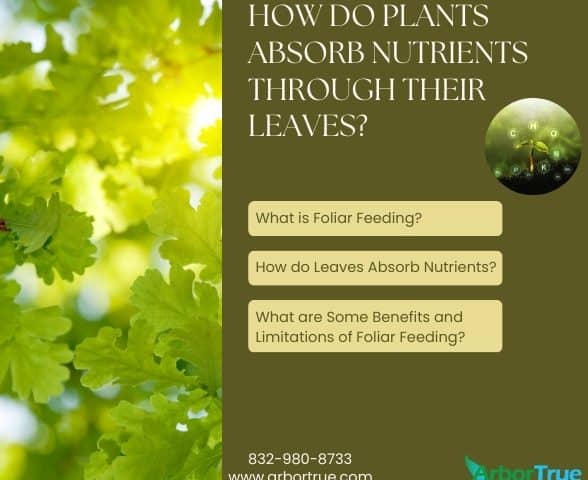
Benefits of Quality Organic Lawn Fertilizer
March 6, 2024
Mushroom Monday: Orange Mycena
March 11, 2024
How do Plants Absorb Nutrients Through Their Leaves?
Although you might think of plant roots as where nutrients are absorbed by plants, you may have heard about foliar feeding of plants. This is where a nutrient solution is sprayed onto plants and absorbed through leaves. Have you wondered how this works? We explain a little about it below.
What is Foliar Feeding?
Foliar feeding is when nutrients, including micronutrients, are delivered to a plant in a liquid solution that is sprayed onto plant leaves. It can be applied to trees, grasses, shrubs, and more.
How do Leaves Absorb Nutrients?
Leaves can absorb nutrients in three main ways.
The first way nutrients can enter a plant’s leaves are through the stomata. Stomata are openings on plant leaves (which includes blades of grasses) that can be found on both the topside and bottom sides of leaves. They are where moisture leaves a plant during transpiration and where CO2 enters as part of photosynthesis. Stomata open and close depending on conditions. These conditions include things like light, moisture, CO2, and temperature levels. When stomata are open, moisture can enter in. If the moisture has dissolved nutrients in it, they can also enter. Additionally, plants can also absorb minerals found in the air through their stomata.
The second way nutrients can enter a plant through its leaves are through leaf cuticles. A cuticle is a layer which covers leaves. It’s waxy and it protects leaves from losing water and from different diseases and pests. Leaf cuticles have tiny pores where nutrients can enter. Different factors can influence how nutrients are absorbed through leaf cuticles. For example, thinner cuticles can absorb nutrients better than thicker ones. Although nutrients can be absorbed by leaf cuticles, the amount isn’t as much as can be absorbed through stomata or roots.
The last way nutrients can enter a plant’s leaf is by directly penetrating the cells of the leaf.
A number of things impact how a plant takes in nutrients through its leaves. This includes things like what the nutrients are, how concentrated they are, and what temperature and humidity conditions are. The type of plant, soil conditions, and the needs of the plant are also important factors.
Depending on the nutrients and conditions, when nutrients are applied through foliar spray they can travel through the leaves to other parts of the plant.
What are Some Benefits and Limitations of Foliar Feeding?
Foliar feeding can have a number of benefits. For example, foliar feeding can be a good way to supply micronutrients to plants. It can also be good for situations in which nutrients aren’t in the soil or aren’t in the soil in a way that plants can use them. There are conditions that can limit how much of nutrients a plant can take up through its roots, and foliar feeding can help in these situations. Additionally, foliar feeding can have a quicker effect than root feeding.
There are some limitations to foliar feeding. First, not all nutrients applied to leaves through foliar feeding are absorbed through leaves and not all nutrients that are absorbed through leaves are able to make their way through the entire plant. Second, if nutrients are applied in too high of a concentration or under the wrong conditions, like in bright sun, they can burn plants. These two reasons are why it is important to choose the right foliar spray for your plants. Third, the effectiveness of foliar feeding can be impacted by conditions such as temperature and humidity. Lastly, nutrients applied during foliar feeding can only be absorbed by the plant when the nutrients are in a liquid form.
When considering foliar feeding it is important to keep in mind the condition the plant is in, the type of plant, the nutrient needs of the plant, and the nutrients available for the plant in the soil. Foliar feeding can be a good addition to improving soil conditions and feeding a plant through the soil. Under the right circumstances it can be an effective way to deliver nutrients, including micronutrients, to a plant.




